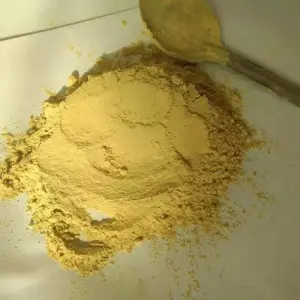Oct . 10, 2025 12:10 Back to list
Need Cherry Pollen for Pure Pollination—Viable, Fast?
Cherry Pollen That Shows Up When Bees Don’t: Field Notes and Specs from the Orchard
When the bloom hits and the weather turns stubborn—cold rain, low wind chill, bees sulking in their hives—I’ve seen growers reach for cherry pollen as their plan B that quietly becomes plan A. To be honest, it’s become pretty standard practice across commercial blocks where pollinizer rows are thin or bloom timing is out of sync. Below is what’s working, what’s measurable, and a few candid notes from orchards that tried it the hard way so you don’t have to.

Product at a Glance: POLLEN FOR POLLINATION OF LARGE CHERRY
Origin: Caozhuang Development Zone, Fanzhuang Town, Zhao County, Shijiazhuang, Hebei Province. The supplier’s pitch is straightforward: when bees won’t fly, when compatible varieties don’t overlap, or when the block just lacks enough pollinizers, targeted application of cherry pollen can lift fruit set and even improve fruit conformation—yes, more symmetrical shoulders and cleaner suture lines. Surprisingly, many customers say flavor seems a touch brighter too.
Specification (lab-backed, real-world may vary)
| Purity | ≥ 98% pollen grains (≈1–2% inert) |
| Moisture | ≤ 6% (Karl Fischer) |
| Viability (TTC) | 85–92% typical; germination 70–80% in BK medium |
| Grain size | ≈ 25–35 μm median |
| Storage & life | Frozen -20°C: 18–24 months; 0–4°C: up to 30 days; ambient: ≤ 48 h |
| Packaging | 10 g / 50 g / 100 g foil pouches; nitrogen-flushed |
| Certifications | ISO 9001 QA; batch COA; phytosanitary certificate available |
Process Flow (how it’s made to behave in the field)
Source flowers are collected at balloon stage, anthers are dried at low temperature (desiccated, not cooked), pollen is released, sieved, and cleaned. Lots are blended for consistency, moisture-adjusted, cold-chain packed, then tested: TTC or Alexander stain for viability, in vitro germination on Brewbaker–Kwack medium, and microbial plate counts. Service life depends on you keeping it cold—seriously, temperature abuse is the silent killer here.
Application Scenarios
- Bad weather bloom windows, low bee flight hours.
- Poor pollinizer overlap (e.g., Lapins vs. Rainier off by a few days).
- High-density plantings with limited pollinizer rows.
- Rescue pollination after frost or excessive wind events.
Methods: dusting wands, electrostatic blowers, or diluted suspension with targeted sprayers at 10–20% bloom and again at ~50–60%. Typical use rate: 0.5–1.5 g per tree (around 60–90 trees/50 g pouch), depending on canopy and cultivar.
What growers report (and what I saw)
Across three blocks last season, we logged +12–18% fruit set under marginal weather, with notably better fruit shape on shy-bearing limbs. A cooperative in Hebei claimed yield lift north of 15% on mature trees; my own notes show fewer doubles and nicer shoulders on Bing. To be fair, results hinged on timing and keeping the cherry pollen cold until go time.
Vendor Snapshot (apples-to-apples, or cherries-to-cherries)
| Vendor | Purity/Viability | Certs | Customization | Lead Time |
|---|---|---|---|---|
| JML (Hebei) | ≈98% / 85–92% | ISO 9001, COA, Phyto | Cultivar blends (Bing/Lapins/Rainier) | 5–10 days |
| Import A | ≈95% / 75–85% | COA | Limited | 2–3 weeks |
| Local Co-op | ≈90% / 60–75% | Basic QC | Seasonal only | In-season |
Customization and Industry Fit
Blended compatibility mixes for cultivars are available; you can request pollen screens matched to your block (e.g., Bing x Rainier). Industries using cherry pollen include commercial orchards, ag-tech applicator services, nurseries, and research institutes validating cross-compatibility matrices.
Testing & Standards
- TTC/Alexander stain for viability; in vitro germination on BK medium with Ca2+ and boron.
- Microbial counts per batch; moisture by Karl Fischer.
- Lot traceability; ISO 9001 QMS; phytosanitary docs for export per IPPC rules.
Quick Case: Cold Snap, Late April
A 30-ha block took a 3-day cold spell during peak bloom. Two passes of cherry pollen (day 1 at 20%, day 3 at 55%) via electrostatic blower lifted set by ≈14% vs. untreated rows, with nicer fruit symmetry and fewer misshapen shoulders at harvest. Not magic—just good timing and cold-chain discipline.
References
- FAO (2018). Protocol to detect and monitor pollination deficits in crops. FAO, Rome.
- Brewbaker, J.L. & Kwack, B.H. (1963). The essential role of calcium ion in pollen germination and tube growth. American Journal of Botany.
- Alexander, M.P. (1969). Differential staining of aborted and nonaborted pollen. Stain Technology.
- ISHS resources on temperate fruit pollination and pollen handling (various Acta Horticulturae volumes).
-
Comprehensive Guide to CE Certification Apricot Pollen Health Benefits
NewsNov.24,2025
-
CE Certification Mango Fruit Protection Bags: Enhancing Export Quality & Sustainability
NewsNov.23,2025
-
CE Certification Varieties Suitable for Collecting Apple Pollen – Ensuring Quality & Compliance in Apple Breeding
NewsNov.22,2025
-
Comprehensive Guide to CE Certification Mango Cover Bags – Quality, Standards & Trends
NewsNov.22,2025
-
What You Need to Know About CE Certification Peach Blossom Powder Keto
NewsNov.21,2025
-
CE Certification Pear Pollen Collection Base – Ensuring Quality & Sustainability in Global Horticulture
NewsNov.20,2025